https://msjacobs.com
800-348-0089
Sponsored by M.S. Jacobs & Associates, a manufacturer’s representative and distributor of industrial instrumentation, control valves & process controls. Located in Pittsburgh, Pa. and covering Western Pennsylvania, West Virginia, and New York. Representing top lines in pressure, temperature, level, flow, analytical instruments and industrial valves.
Telephone: 800-348-0089 or MSJacobs.com
When winter temperatures plummet, industrial facilities must protect more than just their pipes and valves from freezing. The entire operational infrastructure, including control panels, pumps, instrumentation, and hoses, requires protection against ice formation. Frost damage to any of these components can derail operations, creating unsafe conditions and triggering expensive shutdowns.
Columbus-based manufacturer BriskHeat addresses these challenges with their comprehensive line of heating solutions. Their products include specialized heating tapes, cables, silicone rubber blankets, and custom heaters for drums and totes. These flexible heating elements make direct contact with equipment surfaces, preventing cold air infiltration and condensation that typically plague pumps, sensors, and control boxes.
Temperature control plays a vital role in maintaining product quality across numerous industrial processes. Many liquids thicken or solidify as temperatures drop, which disrupts flow rates and compromises end products. BriskHeat's heating cables and silicone blankets distribute heat evenly, maintaining optimal temperatures without risking damage to temperature-sensitive materials.
The relationship between temperature control and safety extends beyond product quality. Chemical storage areas face increased risks of leaks and pressure-related incidents when temperatures drop too low. Cold weather can also disable sensitive electronics, potentially shutting down essential operations. Facility managers who implement BriskHeat's flexible heating solutions create safer working environments while protecting critical equipment.
Drawing on decades of experience in electric surface heating, BriskHeat emphasizes the importance of prevention over reaction. Engineers who combine heating tapes, blankets, insulation, and temperature controllers create reliable heat zones throughout their facilities. This systematic approach protects every component that handles liquids, gases, or temperature-sensitive materials.
As winter intensifies, industrial facilities need comprehensive protection strategies. The freezing of any single component—whether pump, control box, instrument, hose, or container—affects the entire operation. BriskHeat's heating solutions help facility managers maintain safety standards, protect product integrity, and ensure operational efficiency through the coldest months of the year.
M.S. JacobsM.S. Jacobs & Associates, Inc. is happy to announce its appointment as an official ARCA Valves distributor. ARCA Valves has garnered global renown for its innovative technology and established quality since its foundation over a century ago. ARCA's pneumatically and electrically operated control valves provide high value for many industrial applications. They meet the rigors of many challenging applications in various industries, including power plants, chemical plants, pharmaceutical and food processing, and steel mills.
Thanks to its excellent vertical integration, ARCA's manufacturing process is versatile and has a high supply capacity. ARCA manufactures and supplies valves with nominal diameters up to 48" and pressure ratings of over 5,000 PSIG for high-pressure applications.
ARCA's technological leadership is built on 90 years of expertise and ongoing innovation, evidenced by several patents. The factory's output, which is of the highest technical quality and certified to appropriate quality standards, ensures a high level of dependability.
For more information, contact M.S. Jacobs by calling 800-348-0089 or visit https://msjacobs.com.
BriskHeat provides a superb assortment of heat trace cables, often known as heating cable, heat tracing cable, or heater cable. XtremeFLEX® Heating Tapes and Cords' flexible designs and high-temperature capacity make them an excellent choice for your heat tape for pipes and heat wrap tape needs! Heat tape and cords are perfect on any surface or body that requires fast and effective direct contact heating, such as wrapping pipes, with maximum exposure temperatures reaching 1400°F (760°C).
Contact M.S. Jacobs for BriskHeat products. Call 800-348-0089 or visit https://msjacobs.com.
The TRICOR CLASSIC Series of Coriolis flowmeters is our "ordinary" line, with lower cost and performance specs to cater to a broader market. The TCM “CLASSIC” series meets general industrial requirements with out-of-the-box ease of use. Lower cost and lower performance specs meet broader application needs. Applications include the processing of paint and coatings and dosing of non-corrosive fluid requiring 0.3% accuracy and low to zero maintenance.
The TRICOR PRO Series is an "advanced" line, with improved performance, diagnostics, and connectivity, as well as a DSP transmitter. The new TCD 9000 series of transmitters offers greater robustness, performance, diagnostics, and connectivity options. With a modern HMI interface and robust logging functionality, the DSP transmitters provide users with an efficient configuration and analysis tool.
The TRICOR PRO Plus Series contains a small sensor linked to a TRICOR DSP transmitter. The new PRO Plus Series presents an accurate and highly repeatable meter with the most compact installation length on the market for installation into systems where space is limited. In addition, the TCD transmitter offers greater robustness, performance, diagnostics, and connectivity options. With a modern HMI interface and robust logging functionality, the DSP transmitters provide users with an efficient configuration and analysis tool.
Finally, the TRICOR SPECIALTY Series Coriolis flowmeters for high-pressure applications are available. The TCMH 0450 is offered in three pressure ratings: 6,000 psi, 10,000 psi, and 15,200 psi (414 bar, 690 bar, and 1050 bar). The material choices for the U-shape tubes are either 316L stainless steel for chemical injection applications (NACE compliant) or Sandvik® Alloy HP 160, chosen to eliminate hydrogen embrittlement, such as in Hydrogen fueling stations. The TCMH 0450 is the world’s first MI-002 / OIML137 certified Coriolis flowmeter for hydrogen dispensing applications.
M.S. Jacobs
https://msjacobs.com
800-348-0089
 |
| Qnergy’s free-piston, Stirling engine. |
| Plating acid tanks. |
| Levelpro PLF |
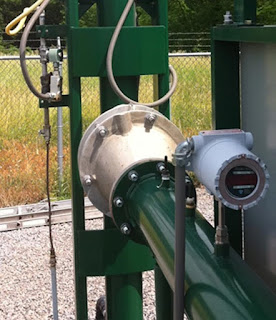 Thermal mass flow meters offer accurate, repeatable, and dependable measurements of liquids and gases for both industrial and environmental processes. They are used in a multitude of applications including landfills, GHG emissions, flare gas, natural gas measurement, pollution control, petrochemical, chemical processing, measuring hydrogen gas, food and beverage, pharmaceutical, semi-conductor manufacturing, sub-metering of clean process gases, and power / utility.
Thermal mass flow meters offer accurate, repeatable, and dependable measurements of liquids and gases for both industrial and environmental processes. They are used in a multitude of applications including landfills, GHG emissions, flare gas, natural gas measurement, pollution control, petrochemical, chemical processing, measuring hydrogen gas, food and beverage, pharmaceutical, semi-conductor manufacturing, sub-metering of clean process gases, and power / utility.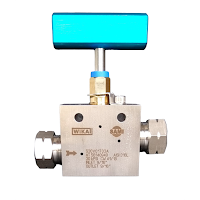 High-pressure valves are being added to the WIKA portfolio of pressure, temperature, level, flow and WIKA USA includes ball valves, needle valves, check valves, and instrument manifold valves with pressures from 15,000 psi to 60,000 psi. in 1/4" to 1" sizes.
High-pressure valves are being added to the WIKA portfolio of pressure, temperature, level, flow and WIKA USA includes ball valves, needle valves, check valves, and instrument manifold valves with pressures from 15,000 psi to 60,000 psi. in 1/4" to 1" sizes.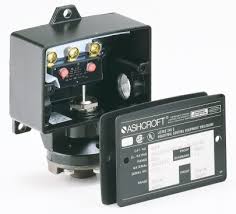 |
| Internal view of pressure switch. (Ashcroft) |
 |
| Switch Status Symbols |
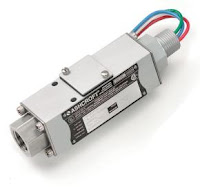 |
| Explosion proof pressure switch. (Ashcroft) |
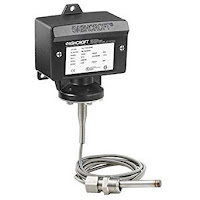 |
| Temperature switch (Ashcroft) |
 |
| Cashco Ranger QCT |
| ICON Levelpro plastic level sensors. |